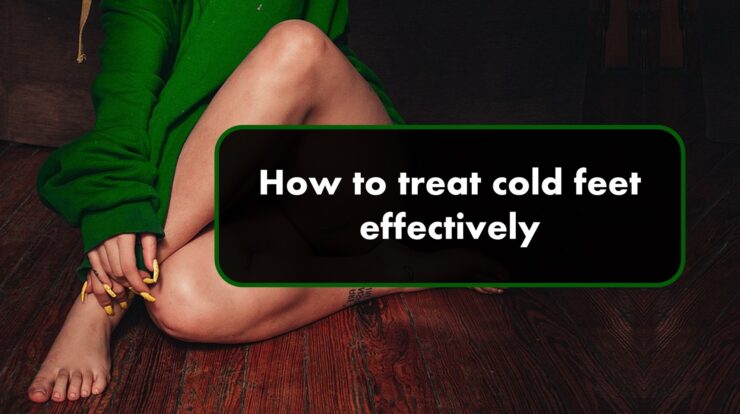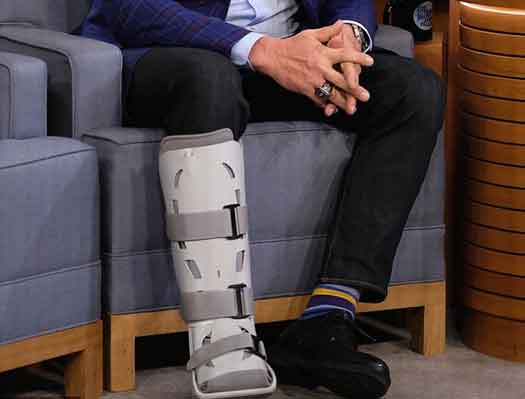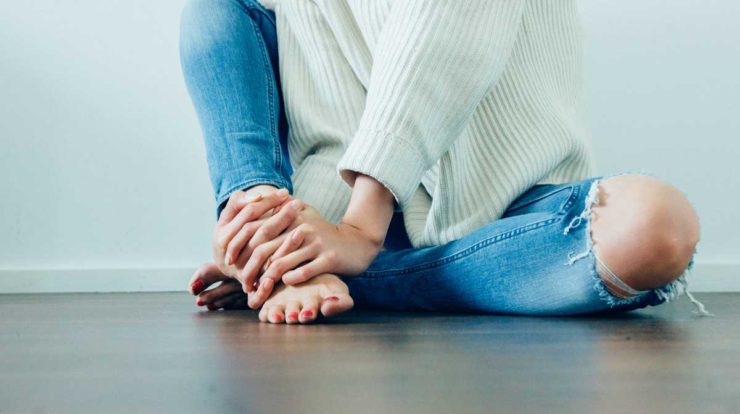
Have you ever gone into a shoe store, bought a shiny new pair that just caught your eyes the moment you walked in and ended up back at home with the sudden realization that the back might be a little too tight and uncomfortable?
Don’t worry, that’s happened to all of us. Guess we were all a little too excited to buy a new pair that we forgot to check every detail.
No worries. After you wear them a few times, they may loosen up a bit, right? Well, that is true, but do you really want to wear uncomfortable shoes for a few days at the risk of them hurting you? Do you really think that the discomfort and pain are going to allow you to get through the day?
I know for a fact that when my feet hurt from wearing uncomfortable shoes that the day seems ten times longer and I can become a little grouchy.
Fortunately, there are ways to fix your little problem by softening the back of your new shoes. There are many ways, in fact.
Ways How To Soften The Back Of New Shoes:
When (not if) you find yourself with an uncomfortable new pair of shoes with an annoyingly hard backside, then you should definitely try some DIY methods of softening it before you injure yourself.
The methods listed below are relatively easy, and you don’t have to worry about spending too much money as you will use materials that you most likely already have sitting at home
Try Socks And Insoles
The first thing any person tries when dealing with painfully hard backs is to use any form of added padding and cushioning. You’ve probably heard of a person “breaking in” their shoes. Well, this means that the shoe is still too firm and hard to be comfortable.
So, what you’re going to do in add some insoles into your shoes, and then double the padding by wearing socks. Then you just need to strut around your house whenever you have some free time, breaking your shoes in so that you can loosen up the firmness a little.
That way, when you first wear them out in public, they already feel a little bit more comfortable and worn out. The extra padding on the inside will stretch out your shoes a bit so that they are more comfortable, and this stretching will soften the hard backside of the shoe.
If you’re going to add insoles, it would be best to add ones that are customized. This means they are made specifically for your shoe size and for the style of your shoe. Insoles that don’t fit perfectly can be useless, or they can be noticeable, which I think is something most people would prefer to avoid.
Thick Socks
If you don’t feel like buying customized insoles, then you can just break in your shoes by wearing thick-padded socks. They work the same way as using the insoles-socks combination.
The thick padding will not only provide you with comfortable cushioning to protect the back of your ankle from any chafing, but they will also stretch out your shoes a bit to provide enough space for your feet to fit comfortably.
No need to spend money on insoles; simply slip on a pair of thick socks, put on your shoes, and walk as much as you can.
This method is particularly advisable for runners who are trying to break in a pair of trainers. The thick padding will help provide sufficient space inside the shoe while still protecting your feet from chafing and blisters.
The benefit of this method is that there are a variety of socks with different thicknesses of padding available. You need to take extra care in choosing the right thickness.
Socks that are too thick can overstretch your shoes when they only needed a little extra space. However, if you choose socks that aren’t thick enough then you risk the socks not having the desired effect.
Rubbing Alcohol
If you don’t have a bottle of rubbing alcohol sitting on a shelf at home already, then you can simply head to the nearest pharmacy or supermarket and get it for a very cheap price. This method is only suitable for shoes that are made of canvas, and not the more formal shoes. It’s also best to use in combination with socks.
What you’ll need to do in wear your thick socks to stretch the shoe to the desired size, then spraying the rubbing alcohol all around the shoe. You should use quick-drying alcohol in order to prevent any damage to the shoe.
When the alcohol is absorbed into the shoe while it is stretched, it will remain that way even when you wear regular socks. That way your shoe will fit your feet just right, while also having softened any stiff areas in the process.
Kerosene
Kerosene acts the same way as rubbing alcohol, only this method can be used on leather shoes as well. Kerosene is a type of fuel, and in order to achieve the desired softening and stretching effect, it should be used in conjunction with vinegar.
Don’t worry about the smell, though. When you’re done with the process, just leave your shoes in the open air for a few hours so that the smell can go away.
Start by dipping your shoes into a container of plain old vinegar. You’ll need to submerge it completely because the vinegar needs to be applied on the inside as well as the outside of the shoe. After that, apply the kerosene as a coating later.
The combination of the two will soften the leather on its own, but if you need to add a little extra space inside, then wear socks and slip on your shoes to stretch them out a bit.
Shoe Stretching Spray
If you don’t feel like trying all these DIY home remedies that could damage your shoes or leave them with a pungent smell, then you can enlist a professionally brewed mixture of chemicals that will do get the job done. Shoe stretching sprays can be found at hardware stores or some shoe stores and shoe repair shops.
These sprays are extremely effective, not only in softening all types of materials but in stretching them out too. Shoe sprays are particularly effective n leather shoes and boots. The kerosene method involves soaking leather shoes, but when leather is too wet, they could lose their shape and shine entirely.
This is where the spray is more effective: it doesn’t make the shoe too wet, while still delivering the desired effect. Some sprays even have an added conditioner to improve the appearance of leather shoes.
Just like every method, it’s best to be used with socks. Simply slip on your socks, slip on your shoes, spray your shoes, then walk around a bit. It is that easy.
Hair Dryer
If you don’t feel like adding any liquid or chemical to your shoes, then you can always try the heat method. If you remember eighth-grade physics, then you’ll recall that heat causes objects to increase in size.
The size increase can also loosen up any stiff materials so that they feel softer. This method is versatile because it allows you to soften your shoes without the need to stretch it out.
This is perfect if you think your shoe fits right, yet it still has that annoyingly hard backside. It can also be used on most materials.
If you want to create a little extra room inside, then you know the drill – slip on a pair of socks first. If not, just grab your or your girlfriend’s hairdryer and heat up your shoe. You can aim the heat at all the areas that need softening or stretching.
If you think your shoe is ready, wear them the way you would on a daily basis (whether you need socks or not). If they aren’t right just yet, repeat the process until your shoes are exactly the size you want or as comfortably soft as you’d like them to be.
Professional Help
If all else fails and you’re desperate enough, then you can enlist the help of the professionals. Just head over to your local shoemaker or shoe repair shop and they will assist you with whatever you need.
This should be left as a last resort, or when you don’t have the time and you don’t mind spending the money.
Basically, there are ways for you to make your shoes comfortable. You don’t have to suffer walking around all day with stiff shoes that hurt your feet. Just spend a few hours fixing them yourself and you can strut your new shoes with confidence.






